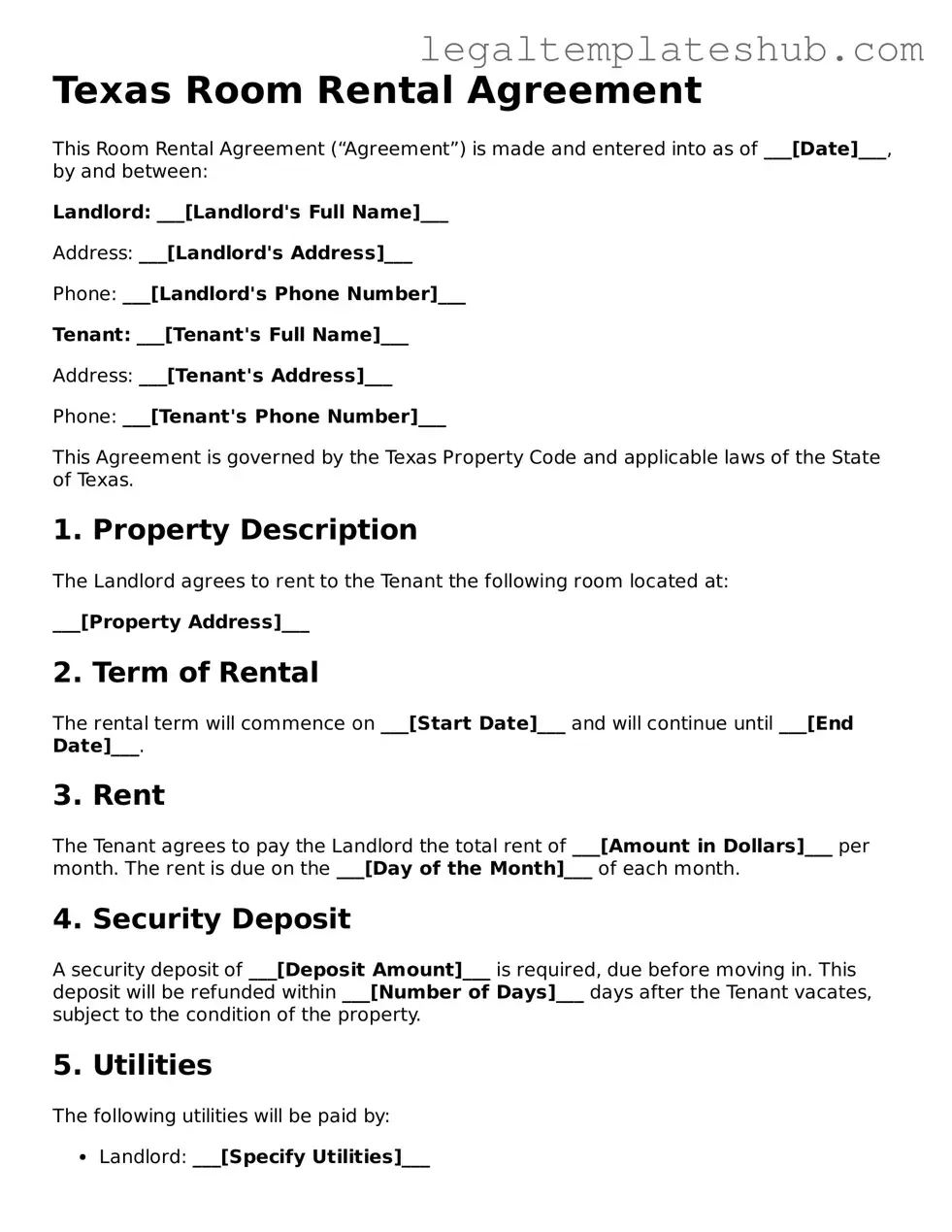Printable Room Rental Agreement Document for Texas
The Texas Room Rental Agreement is a legal document that outlines the terms and conditions between a landlord and tenant for renting a room in a residential property. This agreement serves to protect the rights of both parties and ensures clarity regarding rental payments, maintenance responsibilities, and other essential terms. Understanding this form is crucial for anyone looking to rent or lease a room in Texas.
To get started, fill out the form by clicking the button below.
Access Editor
